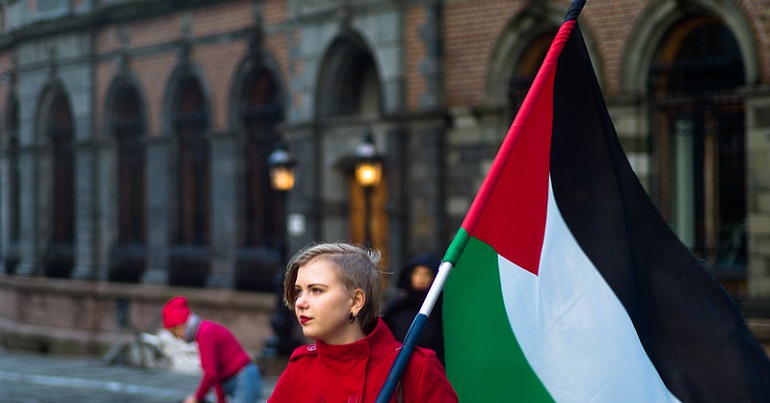Boycott: the strongest political act we have against Israel

On Saturday 5th June, somewhere between 3000 and 5000 people gathered in Edinburgh city centre to protest against the actions of the Israeli State.
We were there because we are angry, appalled and disgusted at the way the Israeli State continues to flaunt international law and opinion, not least by boarding the flotilla carrying humanitarian supplies for blockaded Gaza, just a week ago. This behaviour and the further killings that happened over the weekend show just how determined the Israeli government is to maintain its siege.
The siege brings death and destruction on the people of Gaza every day. Whether as a result of disease, malnourishment, or at the barrel of a gun, the people of Gaza face an everyday threat to their existence.
I am a South African. In South Africa we had a government that denied human rights to people on grounds of race. This was widely condemned by the international community. The boycott of apartheid South Africa, its sporting, economic and cultural activities, forced that government to negotiate not only the end to apartheid, but also the consequent democratic reform that saw Mandela welcome South Africa back into international legitimacy. Eventually international condemnation and an international boycott brought down the apartheid regime. Only similar international condemnation will stop the racist Israeli state from denying human rights to Palestinians.
When I was last in Palestine, I saw the results of the devastating oppression Palestinians suffer at the hands of the Israeli state, demonstrating to me the urgent need to promote peace and justice for Palestinians. I saw children ill and malnourished, students terrified to go to class for fear of being shot in the back as they made their way between home and university, fields and fields of olive trees cut down at ground level so that Palestinian farmers could not make a living for themselves.
But, I also saw something else in the people I met: an extraordinary hope, an overwhelming optimism, and a solid belief in reconciliation that means peace is possible. But that peace can only be secured with the full participation of the Israeli state.
It is very easy, and very tempting, to want to punish the Israeli state with violence, to kill Israeli civilians, to do to them what they’ve done to so many thousands of Palestinians. However, violence will only serve to legitimise – in some people’s eyes – an escalation of violence and terror by the Israeli state. The resolution to the siege on Gaza, the occupation of the West Bank, the ever-extending Israeli settlements, has to be achieved peacefully. I believe that peace in Israel/Palestine is possible, and that it can be a just peace; a peace in which all people enjoy freedom and human rights, where no one is blockaded, where everyone is able to pursue their lives free from military threat, where the ill can get medicine, and where justice is central.
This does not mean that we should stand by and watch as Israel continues the injustices that it has got away with for decades. It does not mean that we should not be angry. It means that we need to channel our anger in productive and constructive ways. We must be angry at the wilful violence of the Israeli state, and let the world know that we are angry; by demonstrating peacefully, by visiting Palestine to show solidarity, by being on the next aid flotilla to Gaza, by supporting the Israeli peace movement, by making our politicians and our government act to support Palestine and against the vested interests of the Israeli state.
But perhaps the most powerful tool we have as communities and individuals is the choice to refuse to prop up the Israeli economy, and so to boycott Israeli products and organisations. We must encourage others we encounter to do likewise. The anti-apartheid boycott of South Africa was a no-brainer in the 70s, 80s and early 90s. A boycott of Israel should be just as obvious. We must continue to act; for peace, for justice and for Palestine.
This post was originally posted on Maggie Chapman’s blog: http://maggiechapman.wordpress.com/
PS. We hope you enjoyed this article. Bright Green has got big plans for the future to publish many more articles like this. You can help make that happen. Please donate to Bright Green now.
Image credit: Magne Hagesæter – Creative Commons



Leave a Reply